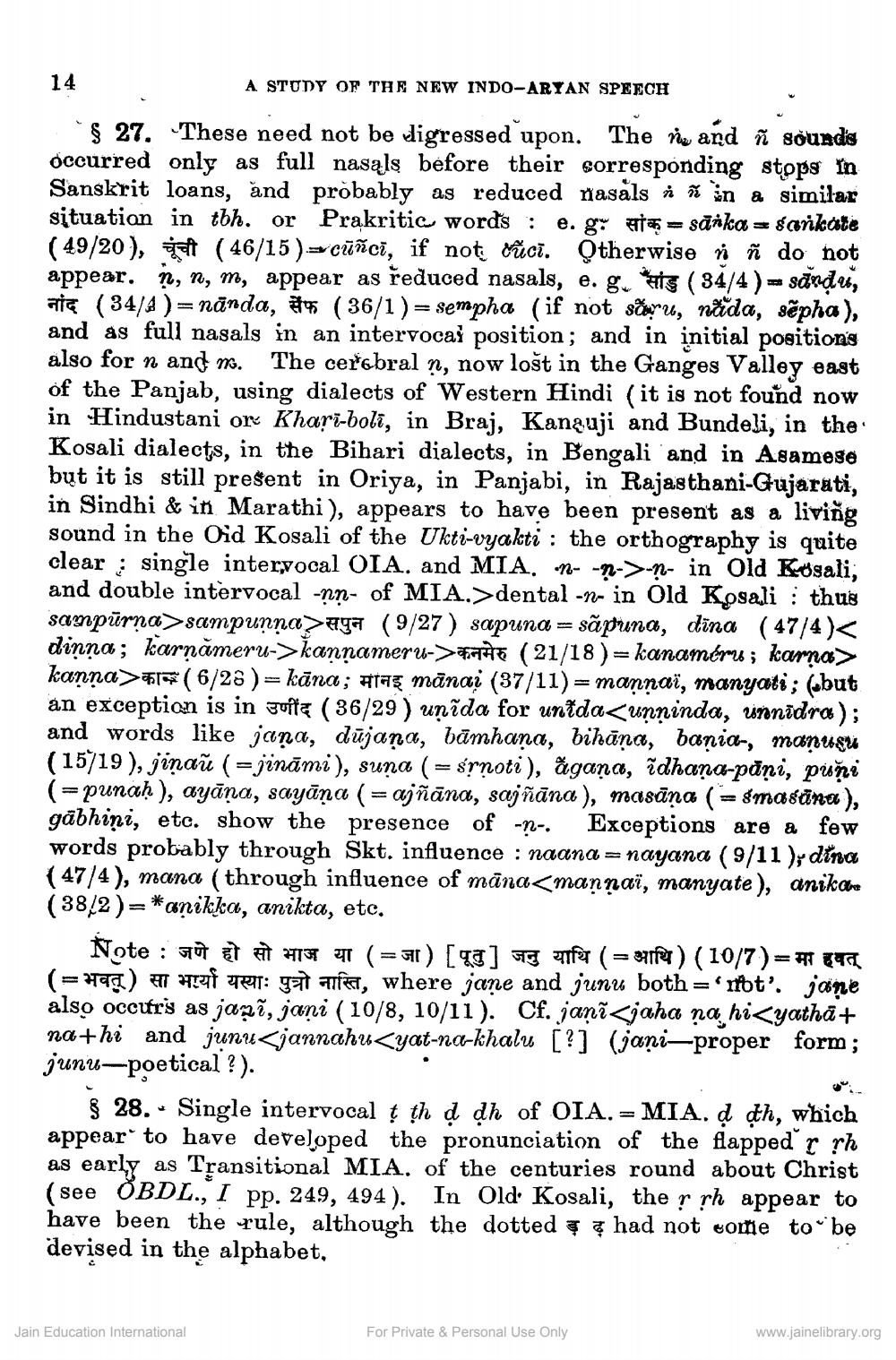________________
14
A STUDY OF THE NEW INDO-ARYAN SPEECH
'§ 27. These need not be digressed upon. The r and ñ sounds occurred only as full nasąls before their corresponding stops in Sanskrit loans, and probably as reduced nasals i ñ in a similar situation in tbh. or Prakritic words : e. go = sārka = sarkáte ( 49/20), at (46/15 )= cūñci, if not rīcī. Otherwise niñ do not appear. n, n, m, appear as reduced nasals, e. g, HS ( 34/4) - sandu, aic (34/4 ) = nānda, 4 (36/1 ) = sempha (if not say u, näda, sępha), and as full nasals in an intervocai position; and in initial positions also for n and ns. The cerebral n, now lost in the Ganges Valley east of the Panjab, using dialects of Western Hindi (it is not found now in Hindustani or Khari-boli, in Braj, Kanauji and Bundeli, in the Kosali dialects, in the Bihari dialects, in Bengali and in Asamese but it is still present in Oriya, in Panjabi, in Rajasthani-Gujarati, in Sindhi & in Marathi), appears to have been present as a living sound in the Oid Kosali of the Ukti-vyakti : the orthography is quite clear : single interyocal OIA. and MIA. n. -n->-n- in Old Kusali, and double intervocal -nn- of MIA.>dental -n- in Old Kosali : thus sampūrņa>sampunna>aga (9/27) sapuna = sãpuna, dina (47/4)< dinna; karnāmeru->kannameru->TE (21/18)= kanamémo; karno-> kanna>#2(6/26 )=kāna; #ag mānai (37/11)= mannai, manyati; (but an exception is in suite (36/29 ) unīda for untda<unninda, unnidro); and words like jana, dūjana, bāmhand, bihāna, bania, manustu (15/19), jinañ ( =jināmi), suna (= srnoti), ãgana, idhana-pani, puni (=punaḥ ), ayāna, sayāna (= ajñāna, sajñāna), masāna (=smasāna), gābhini, etc. show the presence of - Exceptions are a few words probably through Skt. influence : naana = nayana ( 9/11 ); dina ( 47/4), mana (through influence of māna<mannaï, manyate), anikome (3812)= *anikka, anikta, etc.
Note : FUTET AT HT (=51) [90] FETT ( = 1) (1017)=#TETT (=H9) RT: GET FIFFET, where jane and junu both='mt'. jone also occurs as jani, jani (10/8, 10/11). Cf. janī<jaha na hi<yatha+ na+hi and junu<jannahu<yat-na-khalu [?] (jani-proper form; junu-poetical ?).
§ 28. - Single intervocal ț th d dh of OIA. = MIA. d dh, which appear' to have developed the pronunciation of the flapped r rh as early as Transitional MIA. of the centuries round about Christ (see OBDL., I pp. 249, 494). In Old Kosali, the r rh appear to have been the rule, although the dotted ? ? had not come to be devised in the alphabet,
Jain Education International
For Private & Personal Use Only
www.jainelibrary.org




